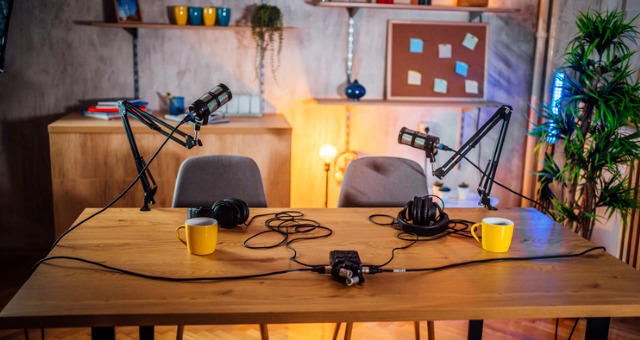Podcasting
Podcasting has become an ubiquitous media form of the past twenty years giving both amateur and professionals the opportunity to share their opinions and expertise. The easy nature of producing a podcast in todays mediated environement make this an inexpensive form of content to produce. Below is a short guide into how you can get started.

https://www.forbes.com/uk/advisor/business/how-to-start-a-podcast
Starting a podcast involves several steps, from planning and recording to publishing and promoting your episodes. Here’s a comprehensive guide to help you get started:
Step 1: Concept and Planning
- Choose a Topic: Select a topic that you are passionate about and that has an audience. Make sure it’s broad enough to sustain multiple episodes but focused enough to attract a dedicated listener base.
- Define Your Format: Decide on the structure of your podcast. Common formats include:
- Solo shows
- Co-hosted shows
- Interviews
- Panel discussions
- Storytelling
- Identify Your Audience: Understand who your target audience is and tailor your content to their interests and preferences.
- Plan Your Episodes: Outline the first few episodes, including the main topics, possible guests, and key points you want to cover. This will help you stay organized and focused.
Step 2: Gather Equipment
- Microphone: Invest in a good quality microphone. Popular options include the Blue Yeti (USB) or the Audio-Technica ATR2100x-USB (USB/XLR).
- Headphones: Use closed-back headphones to monitor your recordings and editing process.
- Audio Interface: If you’re using an XLR microphone, you’ll need an audio interface to connect it to your computer.
- Pop Filter: A pop filter helps reduce plosive sounds (like “p” and “b”) that can distort your audio.
- Boom Arm or Stand: A boom arm or stand will help position your microphone properly.
Step 3: Set Up Recording Space
- Choose a Quiet Room: Find a quiet space with minimal background noise.
- Soundproofing: Use soft furnishings, foam panels, or blankets to reduce echo and external noise.
Step 4: Recording Software
- Digital Audio Workstation (DAW): Choose a DAW to record and edit your podcast. Popular options include:
- Audacity (free, open-source)
- GarageBand (free for Mac users)
- Adobe Audition (paid, professional)
Step 5: Recording Your First Episode
- Script and Outline: Prepare a script or outline to guide your recording. This ensures you stay on topic and cover all key points.
- Test Equipment: Do a test recording to check audio levels and sound quality.
- Recording: Speak clearly and confidently. Don’t worry about making mistakes; you can edit them out later.
Step 6: Editing
- Edit Your Audio: Use your DAW to edit your recording. Remove mistakes, add intros/outros, and enhance the audio quality with EQ and compression.
- Add Music and Sound Effects: Incorporate music and sound effects to make your podcast more engaging. Ensure you have the proper licenses for any music you use.
Step 7: Publish Your Podcast
- Choose a Podcast Hosting Service: Select a podcast hosting platform to store your audio files and generate an RSS feed. Popular options include:
- Libsyn
- Podbean
- Anchor
- Buzzsprout
- Upload Your Episodes: Upload your edited episodes to your hosting platform, along with show notes and episode descriptions.
- Submit to Directories: Submit your podcast’s RSS feed to podcast directories like:
- Apple Podcasts
- Spotify
- Google Podcasts
- Stitcher
- TuneIn
Step 8: Promote Your Podcast
- Social Media: Share your episodes on social media platforms to reach a wider audience.
- Website or Blog: Create a website or blog for your podcast where you can post show notes, transcripts, and additional content.
- Email Newsletter: Start an email newsletter to keep your listeners updated on new episodes and podcast news.
- Collaborate: Partner with other podcasters and influencers to cross-promote your content.
Step 9: Engage with Your Audience
- Feedback: Encourage listeners to leave reviews and provide feedback.
- Interaction: Engage with your audience through social media, emails, and live Q&A sessions.
- Community Building: Create a community around your podcast, such as a Facebook group or a Patreon page.
Step 10: Consistency and Improvement
- Consistent Schedule: Release episodes on a consistent schedule to build a loyal audience.
- Continuous Learning: Continuously improve your skills by learning about audio production, interviewing techniques, and audience engagement.
- Adapt and Grow: Adapt your content based on listener feedback and trends in your niche to keep your podcast fresh and relevant.
By following these steps, you can start a podcast that resonates with your audience and grows over time. Good luck!
